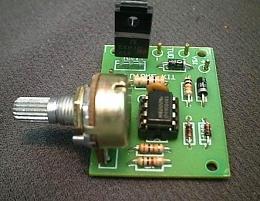The very principle of pulse-width modeling (PWM) has been known for a long time, but it has become relatively recent in various schemes. It is a key point for the operation of many devices used in various fields: uninterruptible power supplies of various capacities, frequency converters, voltage, current or revolutions control systems, laboratory frequency converters, etc. He showed himself perfectly in the automotive industry and in production as an element for controlling the operation of both service and powerful electric motors. The PWM controller has proven itself when working in various circuits.

Let's look at a few practical examples showing how you can control the speed of an electric motor using electronic circuits that include a PWM controller. Suppose you need to change the speed of an electric motor in the heating system of your car. A useful enough improvement, isn't it? Especially in the offseason, when you want to adjust the temperature in the cabin smoothly. The DC motor installed in this system allows you to change the speed, but it is necessary to affect its EMF. With the help of modern electronic elements, this task is easy to accomplish. For this,
a powerful field effect transistor is included in
the motor
power circuit . Manages it, you guessed it, PWM
speed controller. With it, you can change the speed of the electric motor over a wide range.
How does the PWM controller work in
AC circuits? In this case, a slightly different regulation scheme is used, but the principle of operation remains the same. As an example, consider the operation of a frequency converter. Such devices are widely used in production for controlling the speed of engines. First, the three-phase voltage is rectified using the Larionov bridge and partially smoothed. And only after that it is supplied to a powerful bipolar assembly or module based on field-effect transistors. It is controlled by a
PWM voltage regulator assembled on the basis of a microcontroller. It forms control pulses, their width and frequency, necessary for the formation of a certain speed of the electric motor.
Unfortunately, in addition to good performance characteristics, in circuits where a PWM controller is used, strong interference in the power circuit usually appears. This is due to the presence of inductance in the windings of the electric motors and the line itself. They are struggling with this variety of circuit solutions: they install powerful line filters in alternating current circuits or put a reverse diode parallel to the motor in constant power circuits.
Such schemes are notable for their high reliability and are innovative in the field of control of electric drives of various capacities. They are quite compact and well controllable. Recent modifications of such devices are widely used in production.